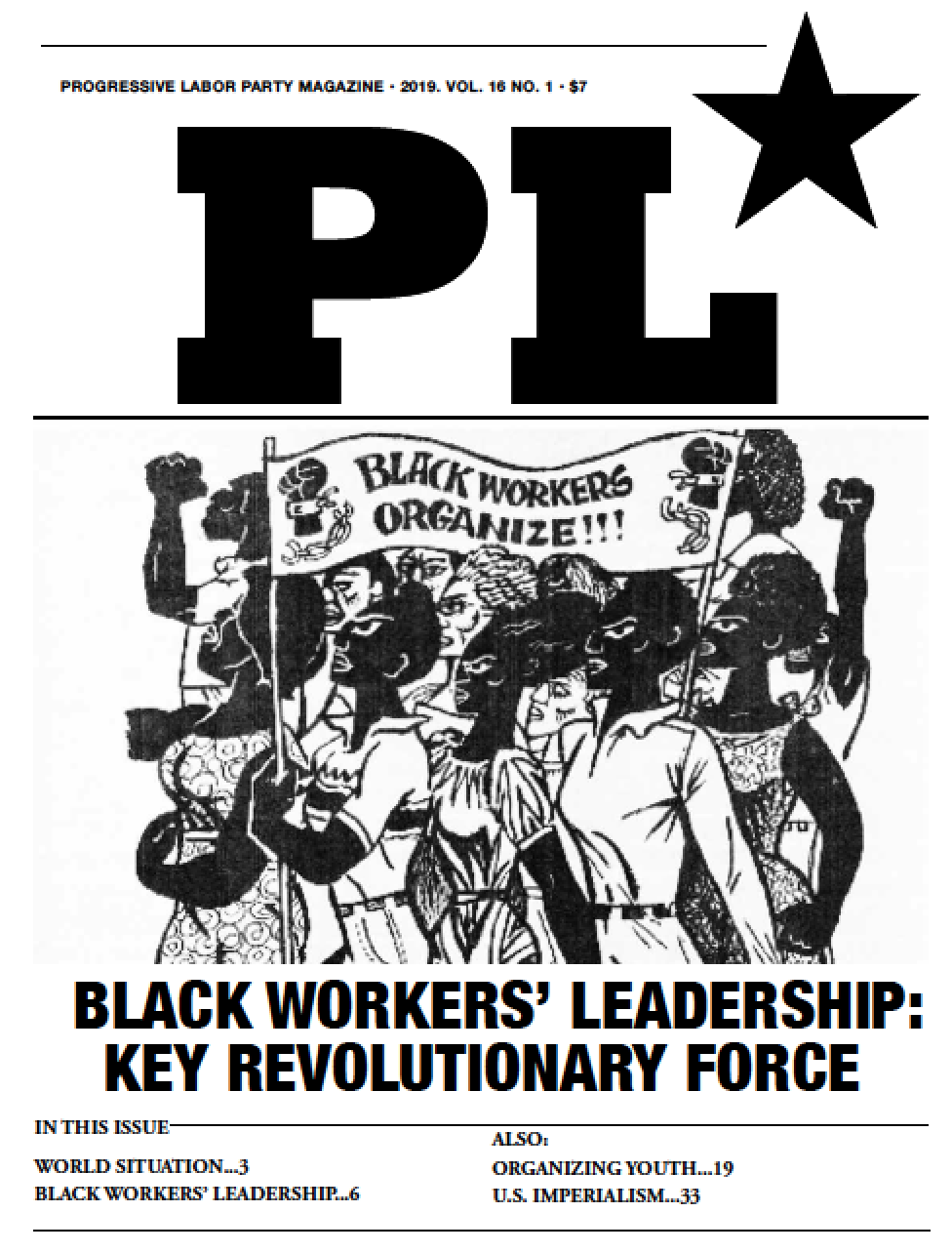Quake Exposes Capitalism’s Inherent Fault Lines
 Wednesday, March 16, 2011 at 8:55PM
Wednesday, March 16, 2011 at 8:55PM On March 11, a massive 9.0-magnitude quake hit Northeast Japan on the east coast of Honshu, the country’s largest island, which, combined with the 33-foot waves of the tsunami it created, killed 4,100 people and ignited hundreds of fires. In the disaster’s wake, entire villages, ports and even schools vanished. Some were evacuation sites for local residents situated on the coasts.
The tsunami hit Miyagi and Iwate prefectures the hardest, obliterating everything in its path, causing the highest death tolls, which could exceed 10,000. The quake’s magnitude has led to frequent aftershocks, including a 6.0 quake on March 15 that hit Shizuoka, extending over the entire Kantou (Eastern) region.
Additionally, the quake disabled the cooling mechanisms of Japan’s oldest nuclear power plant, sparking a meltdown that has forced the evacuation of hundreds of thousands in the surrounding area and causing widespread fear that is being spread by the mainstream media on a 24-hour basis.
While there has been some criticism of the warning systems that gave residents little time to evacuate, most mainstream media sources in the U.S. and elsewhere emphasized Japan’s preparedness for such disasters and have praised the rapidity of rescues, evacuations and recovery efforts. As the world’s third largest economy, Japan has taken significant steps to safeguard its vulnerability against such disasters through fortification in infrastructure and the training, beginning in kindergarten, on how to react to earthquakes and other disasters. Workers in all areas hold weekly practice drills.
Workers Most Vulnerable, Suffer the Most
The protection and preparedness against such disasters, however, is more evident in the capitalist centers like Tokyo or Sendai (the largest city in the Northeastern region, which suffered significant damage), but become lax moving toward the outer regions where the damage and loss of life was the most substantial. This is because most of the residents of these areas — like the small village of Saito in Miyagi prefecture which was totally wiped out — are predominantly working-class families: factory workers, farmers and fishermen/women, and the elderly who built homes there which are the most vulnerable to such catastrophic events. Moreover, tens of thousands of jobs will disappear, further intensifying the exploitation of the working class.
This factor connects the loss of life here to the earthquake in Haiti, or to the 2004 tsunami, which killed hundreds of thousands of local residents on the coastal regions of Indonesia, Malaysia, and Sri Lanka, among other areas, where they are forced to live in conditions unprotected by disasters.
The responsibility and culpability of the national governments in such catastrophes cannot be overlooked, their responsibility is inherently part of the overall picture of capitalism’s failure to plan for social need globally, which in this case works on a number of levels.
Firstly, while loss of life in Japan’s catastrophe is horrific, it is minimal when compared to Haiti’s quake, where the death toll exceeded 200,000, or in the 2004 tsunami, with over 300,000 deaths. Thus, under capitalism some populations are “worth” more than others, according to the hierarchy of profit: as the world’s third largest economy, Japan has a vested interest in protecting itself and its workers from such events, albeit minimally, while in “unprofitable” places like Haiti, Sri Lanka, or even the 9th Ward of New Orleans, there is no room for such planning.
This also reveals the inherent racist dimension of capitalist planning: as a “developed” capitalist country, there is much less racism directed at Japan, emphasized on CNN and other mainstream outlets in their current coverage. Furthermore, most of the discussion on NHK (Nippon Housou Koukai), the largest Japanese news broadcasting system, and on international news is the threat of a nuclear disaster, which is unfolding by the minute.
NHK has been broadcasting the levels of radiations that may leak, with some emphasis on directing the blame both at Prime Minister Naoto Kan’s administration and at Tokyo Electric Power Company (TEPCO) which owns the Fukushima plant. The latter has been cited continuously for violations and is outdated in terms of equipment and meltdown-controlling mechanisms.
Corporate Profits vs. Communist Planning
The meltdown is symbolic of how corporate interests are the priority under capitalism (TEPCO being one of the most profitable corporations, according to the Nikkei stock index), and how planning and the running of such facilities is done poorly. Under communism such events could be minimized or eliminated, since workers would have a social and critical awareness of how to operate nuclear plants properly, for the benefit of the social need, rather than according to the drive for maximum profits.
Finally, the disaster is already being played out through the lens of inter-imperialist rivalry. Obama reacted to the crisis by pledging “support” for Japan, including a significant aid package that most likely will entail the re-evaluation of Japanese-U.S. political and economic relations. U.S. rulers want to use Japan as a buffer against the rise of China. This means increasing the pre-existing tensions between Japan and China over control of the undeveloped gas fields in the South China Sea, as well as the power to exploit the mineral-rich islands that have sparked recent disputes. This provoked pro-nationalist protests in both countries.
Additionally, with Japan’s ongoing economic woes deepening as a result of the current crisis, there has been discussion of the “disaster capitalism” model, which would allow multi-national corporations to privatize the disaster areas and rebuild according to the priority of profit, as is occurring in New Orleans, Argentina and elsewhere.
Capitalism, Liberal Reformists, Phony ‘Communists’ No Saviors
Capitalism always works to the detriment of workers everywhere. Workers in Japan, who have been brainwashed by anti-communism, need to recognize that capitalism will not save them from such disasters, nor will the false hopes of the reformist parties like the Democratic Party of Japan, or fake leftists like the Japanese “Communist” Party, which are the most vocally critical of the recent catastrophe.
All workers need to recognize that a system based on profit will ultimately fail to provide the necessary means to rebuild the world, and in fact has been the systemic cause of the devastation and after-effects of environmental disasters. We must unite to build the internationalism and solidarity of communism, creating a global community of workers who can run the world without capitalist bosses!J
Nuke Plant Built on World’s Hottest Quake Spot
Japan’s heavy reliance on nuclear power is the by-product of decisions made by Japan’s ruling class over the past four decades. Its 54 nuclear plants account for 30% of current power generation, projected to rise to 50% by 2030 as more plants are built.
In 1973, when an oil embargo hit the OPEC countries, staggering the world economy and particularly Japan, nuclear power made up only a small fraction of Japan’s energy supply.
As the World Nuclear Alliance notes on its website, “Japan was dependent on fossil fuel imports, particularly oil from the Middle East (oil fuelled 66 percent of the electricity in 1974). This geographical and commodity vulnerability became critical due to the oil shock in 1973. Re-evaluation of domestic energy policy resulted in diversification and, in particular, a major nuclear construction program. A high priority was given to reducing the country’s dependence on oil imports.”
The placement of dozens of nuclear power plants above the planet’s most active geological fault zone (called “the ring of fire,” the site of 90% of the world’s earthquakes) — and in one of the world’s most densely populated regions — could be considered insane. But amid the capitalist world’s imperialist rivalry, it was imperative for the Japanese bourgeoisie to secure an adequate domestic energy supply, since the country has little oil and gas and insufficient coal.
Moreover, the Japanese ruling class had previous experiences with energy crises well before 1973. As far back as World War II, one of the major driving forces behind Japanese imperialism’s decision to launch preemptive war against the U.S. was the Roosevelt administration’s embargo of U.S. supplies of fuel and scrap metal in retaliation for the Japanese invasion ofChina.
Despite the admitted technological prowess of Japan — the world leader in adapting construction methods to earthquake-proofing its buildings, as well as its high degree of preparedness of the population — this natural disaster has laid bare not only tectonic fault lines, but social ones.
The profit system is incapable of ensuring the safety, health and well-being of workers, even in a country as “advanced” as Japan. Only the abolition of capitalism and the establishment of a world based on workers’ rule can guarantee a misery-free future for the working class.
 Challenge_Desafío
Challenge_Desafío
Japan Quake: Rail Union Raps Bosses’ System of Profits First, Workers Last
JAPAN, March 24 — The reaction of Japan’s capitalist government to the disaster unfolding in that country reflects the horrors of a system that puts profits before workers, a fact that has spurred Japan’s rail union into mass protests.
While the ensuing controversy over the possibility of a nuclear disaster continues to unfold, the Japanese Broadcasting Corporation (NHK) has confirmed that 27,000 people are dead or missing following the recent earthquake and tsunami that hit Northeast Japan on March 11. The situation has become dire for over 200,000 living in temporary shelters (mostly in school gymnasiums) with limited access to hot meals, fresh water, adequate hygienic utilities or medicine, amid outbreaks of influenza and other contagious diseases. All this particularly affects the elderly who comprise a large percentage of the evacuee population.
NHK reports that many hospitals have had to move patients into shelters, which has also increased the risk of disease and death to those already housed there.
The most immediate threat is the continual decline of the Fukushima Daiichi Nuclear Power Plant, which the Japanese government and the operators of the plant, Tokyo Electric Power Corporation, (TEPCO) have been unable to control. A significant amount of radioactive material has leaked from the plant and into soil and drinking water within a large radius which has forced restrictions on local produce. NHK website reports, “Efforts to cool the plants are being hampered by the leakage of highly radioactive materials” which have forced rescue operators to abandon some of the reactors.
Shell Game Downplays Profit
System’s Role
As local officials, the Japanese government and TEPCO play the blame shell game among each other about the possibility of a nuclear disaster little has been said about the system which has produced the problem in the first place: capitalism.
The Wall Street Journal (3/21) said the management of a nuclear meltdown was delayed to preserve “long-term investment” interests in the plants, a decision that clearly reveals the sickness of the profit-making system in which business interest is always put first, despite the possibility of mass destruction and loss of human life.
The parallel between the Japanese governments’ delayed response and capital interests is reiterated in statements by Yonekura Hiromasa, chairman of Nippon-Keidanren (Japan Business Federation). He praised the Japanese nuclear authorities, saying, “Japanese nuclear plants are tough enough to resist the greatest earthquake in a thousand years. It’s wonderful. Japanese nuclear agencies should be proud of it….The accident is going to be overcome. I’m not of the opinion that Japanese nuclear policy is coming to a corner.”
Additionally, Japan’s big banks have diverted billions of Yen to the re-financing of TEPCO, a decision sanctified by the Japanese government. The latter has also provided billions for rebuilding capitalist institutions most affected by the earthquake, rather than allotting them for building sufficient temporary housing and hospital facilities and sending adequate food, water and medicine to affected areas and shelters. This exactly mirrors the aftermath of hurricane Katrina, the Haiti earthquake, the Pakistan floods and basically anywhere profit is put far ahead of workers’ needs.
‘A man-made tragedy’
The Japanese Railway Workers’ union, Doro-Chiba, which has been the most critical of capitalism’s role in the current crisis, sharply condemned Yonekura’s statement and the insufficiency of the government’s response: “The reality before us is by no means a natural disaster but [is a] man-made tragedy, caused by a neo-liberal offensive on the basis of a capitalist market economy. Its real essence is nakedly exposed day by day.”
The Doro-Chiba also led a March 20 protest in Tokyo “to denounce the deceitful policy of the government and to demand disclosure of the facts on the whole development concerning the disaster.” This was to be followed by a national day of mobilization against war on March 27.
This anti-capitalist stance of Doro-Chiba needs to reverberate across Japan and the world. The international working class must fight the sickness of the profit system revamping itself in the wake of the disasters in Japan, Haiti, Southeast Asia, New Orleans — the list goes on. We need to organize workers everywhere to destroy capitalism and run the world for the benefit of all, not the select few!J
U.S. Rulers’ War Machine Outdoes Any Quake
On March 9, 1945, “100,000 to 200,00 men, women and children died…when the U.S. Air Force doused Tokyo with jellied gasoline; all told, in the months before Hiroshima, [conventional] bombs killed up to 500,000…Japanese…and left 13 million homeless.” (U.S. News & World Report, 7/13/95)
By June 1945, U.S. Air Force General Curtis LeMay complained there was nothing left to bomb in Japanese cities except “garbage can targets.”
Afterwards, the U.S. Strategic Bombing Survey noted, “Certainly…Japan would have surrendered even if the atomic bomb had not been dropped.” (“Japan’s Struggle to End the War”)
The L.A. Times agreed: “The hard truth is that the atomic bombings were unnecessary.” (8/5/05) President Harry Truman’s diary referred to a decoded Japanese cable indicating Japan was about to surrender unconditionally, as the “Japanese Emperor [was] asking for peace.”
Generals Eisenhower and MacArthur also agreed, the former later writing that “Japan was already defeated and that dropping the bomb was completely unnecessary” (“Mandate for Change”) and MacArthur also believed that A-bombing Japan was “completely unnecessary from a military point of view.” (James Clayton, “The Years of MacArthur, 1941-1945, Vol. II”)
Yet, as most historians agree, Truman went ahead and dropped the A-bomb on Hiroshima killing upwards of 150,000 civilians — three days before the Soviet Union had pledged to enter the war against Japan — as a “warning” to the Soviets that the U.S. had this hugely destructive weapon. And, to emphasize the “warning,” dropped still another one on Nagasaki three days later, killing perhaps another 100,000, as the Soviets entered Manchuria.
Secy. of State James Byrnes told A-Bomb Project scientist Leo Szilard, “Our…demonstrating the bomb would make Russia more manageable in Europe.” (Leo Szilard; “A Personal History of the Atomic Bomb”) So the U.S. “warning” to the Soviets killed a quarter million Japanese civilians.
Any doubt that U.S. rulers are the world’s most vicious terrorists?





 Progressive Labor Party (PLP) fights to destroy capitalism and the dictatorship of the capitalist class. We organize workers, soldiers and youth into a revolutionary movement for communism.
Progressive Labor Party (PLP) fights to destroy capitalism and the dictatorship of the capitalist class. We organize workers, soldiers and youth into a revolutionary movement for communism.




Reader Comments